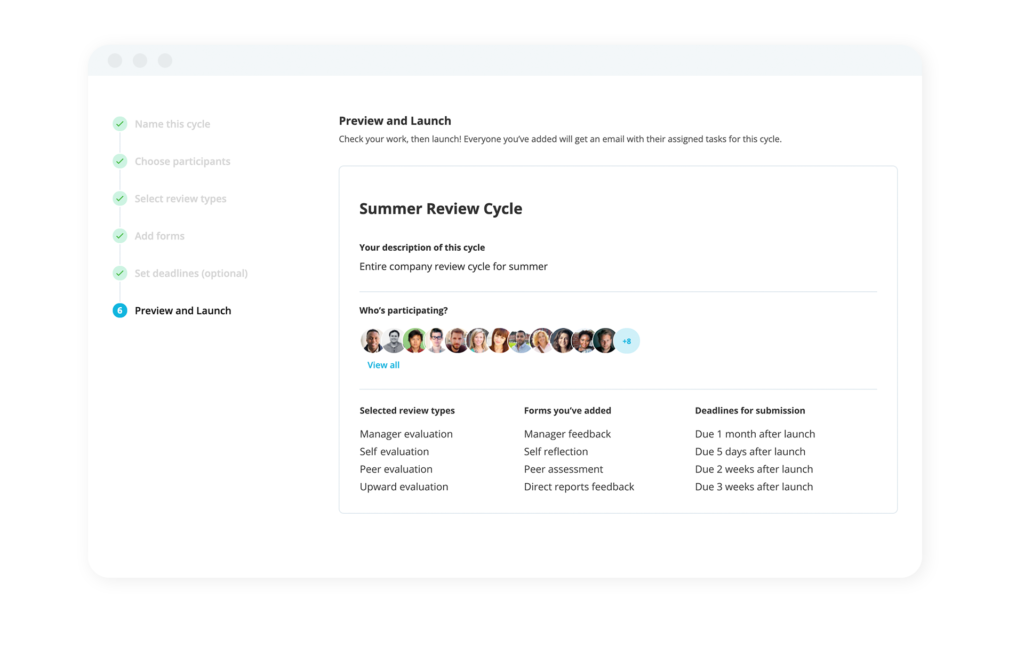Incentives at Work – How To Pick the Right Ones for Your Business

Any business with employees has to find ways to continually motivate their workforce. Although many people feel intrinsically motivated at work, extrinsic motivation from the employer is typically appreciated and often expected.
Managing incentives carefully is key to avoid creating a sense of entitlement or de-motivating employees by not offering the desired incentives. In this article, we’ll cover the basics of employee incentives: types, pros, cons and examples for use.
Key facts:
Employee incentives are used to motivate and encourage employees in the workplace.
There are six types of employee incentives: compensation, non-monetary, rewards, positive reinforcement, job security and employee empowerment.
Every incentive type has its pros and cons, and it’s important for organisations and managers to be intentional about the incentives they use for different situations or types of employees.
Employee Incentives Defined
Employee incentives are rewards (monetary or non-monetary) given to employees to motivate and encourage them to perform better. They can come in the form of monetary bonuses, gifts, awards, recognition, additional vacation time, job security and more. Using employee incentives can be a worthwhile investment for an organisation when they need employees to work toward ambitious goals, meet challenging deadlines or create efficiencies in the workplace.
Employee incentives are an effective way to show employees that their hard work and dedication are appreciated, and to reward the types of behaviour you want to encourage. They are more impactful when given throughout the year, rather than just with one annual bonus.
The 6 Types of Incentives at Work
There are many types of employee incentives to use in the workplace, and others may categorise them differently. Personio groups employee incentives into six buckets: compensation, non-monetary, rewards, positive reinforcement, job security and employee empowerment.
Compensation Incentives
Compensation incentives (also called incentive pay) refer to any reward or incentive that can be calculated monetarily. This would mean a financial reward for performance, tenure or some other attribute in addition to an employee’s usual wages. Compensation incentives can include:
Cash – Cash bonuses, raises, commission (e.g. for sales teams) and allowances (e.g. meals, transportation, gym etc.) are all common compensation incentives. Cash incentives based on performance need to be well-planned, however, as some performance is team-related and cash rewards are usually on an individual basis.
Shares/stock options – Offering shares and stock options is more complex than cash, but is a common employee incentive these days. For example, there were more than 15,000 tax-advantaged employee share schemes in the UK in 2020; a 6% increase over 2019 and 77% higher than 2010.
Profit sharing – In a profit sharing scheme, employees have the opportunity to take home a share of the organisation’s profits as a cash bonus in addition to their wages. This is an effective way to align employee goals with the company’s goal – earning a profit.
Retirement benefits – Offering retirement benefits like pension contributions would fall under monetary incentives and are motivating to employees as they plan for the future.
Non-Monetary Incentives
Financial rewards are not the only thing that drives employees. Some people may be even more motivated by non-monetary benefits (incentives that cannot be measured in terms of money). Some common forms of non-monetary incentives are as follows:
Status – Status is the position, authority, responsibility and prestige associated with a job. Granting higher status or rank within an organisation can motivate employees who are motivated by these factors.
Promotions – Career advancement opportunities can be encouraging to employees who want to reach higher levels in the organisation. When these chances for progression become available, workers will hone their abilities and productivity with the hope of being elevated to a higher position.
Relationships with leadership – The desire to satisfy a manager’s expectations can be highly motivating for employees. This all comes down to organisational culture, however, as an unhealthy climate could turn superior/subordinate relationships into a negative motivator.
Mental stimulation – The monotony of their daily duties can easily become tedious for employees, so providing them with tasks that are challenging, interesting and allow them to demonstrate their skills can be highly motivating.
Rewards Incentives
Rewards incentives can include a range of benefits, such as gifts, service awards, gift certificates and more. Some organisations may also offer employee referral awards to encourage current staff to refer new job candidates and speed the hiring process.
Rewards incentives are often paired with some type of recognition to positively reinforce to employees which behaviours the employer wants to encourage in the organisation.
Positive Reinforcement Incentives
Recognising exceptional employee effort with positive reinforcement is an incentive for employees to repeat or continue certain behaviours. Positive reinforcement incentives can include:
Thanking or praising employees (verbally or in writing) for their work
Giving a certificate of achievement or award
Announcing accomplishments at a company meeting, in a newsletter or even on social media
Peer-to-peer recognition, e.g. giving kudos or shout-outs on Slack to colleagues
Some organisations build a formalised employee recognition program, but positive reinforcement can also be offered in the daily interactions between employees and managers.
Job Security
Job security implies a long-term relationship between the employee and the employer. Providing a permanent or confirmation letter to the employee will secure their job. A well-known example of this would betenured university professors or other academic professionals, whose appointments can only be terminated for cause or under extraordinary circumstances.
It's important to note, however, that even though job security provides assurance and protection, it can also have a detrimental effect. When employees are certain of their job, they can become complacent and might take their job for granted. To ensure the balance is maintained, job security should be given carefully, aligned with certain rules and regulations.
Employee Empowerment
Empowerment of employees involves granting them greater autonomy, which builds their self-assurance and serves as a motivator in their roles. Through this increased freedom, employees are motivated to demonstrate their expertise and prove that they can be trusted to handle their freedom responsibly.
Give Potential Room To Grow With Personio

Automate your performance cycles to open up time for job enrichment with Personio today.
Find Out More
Pros & Cons of Monetary Incentives
Any type of incentive will have its advantages and disadvantages, and in many cases the effectiveness of a particular incentive will depend on the individual employee. Here are some pros and cons of using monetary incentives:
Pros of Monetary Employee Incentives
Increases motivation – Monetary incentives can motivate employees to work harder and be more productive, as they have a tangible reward to work towards.
Improves performance – By setting specific targets or goals, monetary incentives can encourage employees to improve their performance and reach their full potential.
Attracts and retains employees – Offering monetary incentives can make a company more attractive to potential employees and help retain current ones, as they feel valued and rewarded for their efforts.
Provides measurable results – Monetary incentives provide measurable results and can be tied directly to specific outcomes or achievements, making it easy to track the impact of the incentives.
Example of when to use a monetary incentive: Let's say a company wants to reduce the number of workplace accidents and increase safety awareness among employees. They could implement a safety incentive program – for example, cash bonuses or gift cards – to reward employees who have gone a certain amount of time without a workplace accident or who have reported a safety hazard that was then addressed.
Cons of Monetary Employee Incentives
May lead to a focus on short-term goals – Monetary incentives may encourage employees to focus on achieving short-term goals, rather than focusing on the long-term success of the company.
Can create a competitive environment – Monetary incentives can create an overly competitive environment where employees may prioritise their individual success over teamwork and collaboration.
May cause resentment – Employees who are not eligible for monetary incentives or who feel that the rewards are unfair may become resentful or demotivated.
May alter expectations – Over time, monetary incentives may become expected by employees rather than seen as a reward, leading to a decrease in their effectiveness as a motivator.
Example of when a monetary incentive can hurt your business: Let's say a company wants to encourage employees to come up with innovative ideas that could improve the company's products or services. They could implement a monetary incentive program that offers a large cash prize for the best idea. However, this could create unintended negative consequences: hypercompetition, stifled creativity, employee resentment, etc.
Using Employee Feedback to Structure Employee Incentives
Incentives are an effective tool for motivating employees and achieving specific goals, but organisations and managers must take care to choose the right incentives for each situation to avoid unintended negative consequences. Consider the specific needs and motivations of employees and use a variety of incentives, both monetary and non-monetary, to create a positive and productive work environment.
If you aren’t sure where to start with employee incentives, go straight to the source: ask your employees what types ofrewards, recognition and incentives are most impactful and motivating for them.
Download our employee survey template.
Frequently Asked Questions About Employee Incentives
What Are Incentives?
Incentives are used to motivate or encourage someone to do something or act in a certain way. In the workplace, employee incentives are monetary or non-monetary rewards given to employees to motivate them and encourage better performance.
What Types of Incentives Are There?
There are a variety of incentives that can be given to motivate someone. Six of the most common types of workplace incentives are:
Compensation Incentives
Non-Monetary Incentives
Rewards Incentives
Positive Reinforcement Incentives
Job Security
Employee Empowerment
Are Monetary Incentives Right for You?
Monetary incentives can be highly effective motivators for employees, but they aren’t right for every organisation or situation. Review the pros and cons of monetary incentives above to weigh your options.
